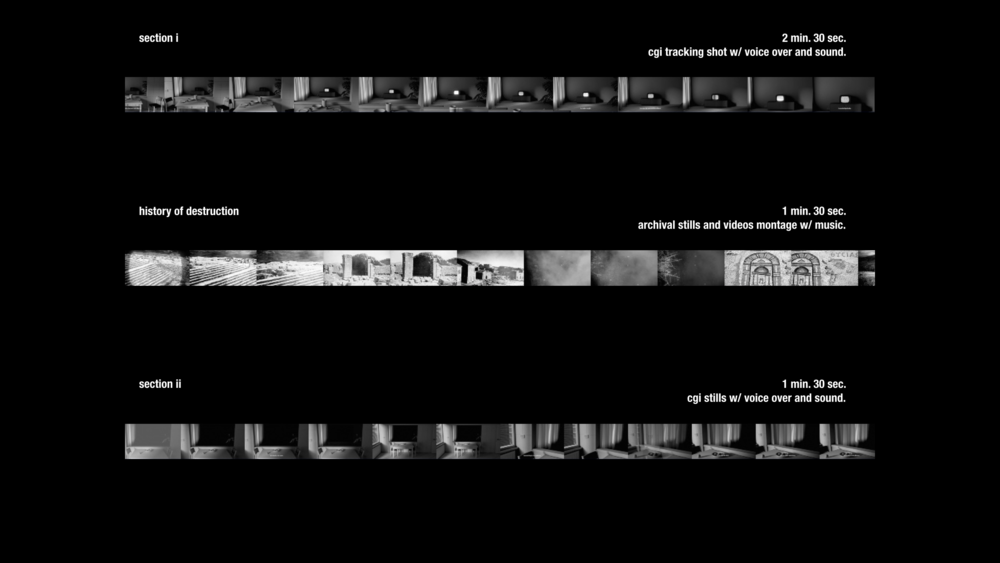The splintering sun \\ EYE researchlabs
This animation work, in which philosophical parable and archeological fantasy come together, is loosely based on life and writings of the Dominican thinker Tommaso Campanella (1568–1639), and specifically of his philosophical allegory The City of the Sun (1602) and of his poem Unarmed Intellect in Ancient Wise Men Was Subjected to the Arms of Madmen (1622). Both written during the years of a long captivity in the hands of the Roman inquisition, these are works of a man who, after being sentenced to death for heresy and attempted armed coup, feigns insanity in order to preserve his life.
Through minimal use of elements such as text, visuals and movement, the work explores the human need to build domains that transcend reality and connects it with the notion of imprisonment, physical and psychological—that is, of how people create their own prisons in the guise of goodness and ultimately lock themselves in them. Through the combination of computer generated and documental imagery, it also considers the feasibility of the creative act as something reflecting on and running away from itself. The clashing essence of fake environments and manipulated archival footage poses questions of what is a mental image, of how it relates with supposedly factual representation—and if delineation of boundaries between the two makes any sense. For the audience this is intended as a contemplative experience compressed to the duration of a glint.
Details
title: Il Sole S'incrina/The Splintering Sun.
duration: 5:35 min.
with: Lorenzo Bassanelli.
bw w/ sound.
archival images courtesy of the Library of Congress.
featuring the Symphony No. 1 in E minor, Op. 39 by Jean Sibelius conducted by Robert Kajanus.
To the video password: cato
Extras
File:Parabola mirabile.pdf
Foucault, Campanella and Madness in the 16th Century
The City of the Sun

